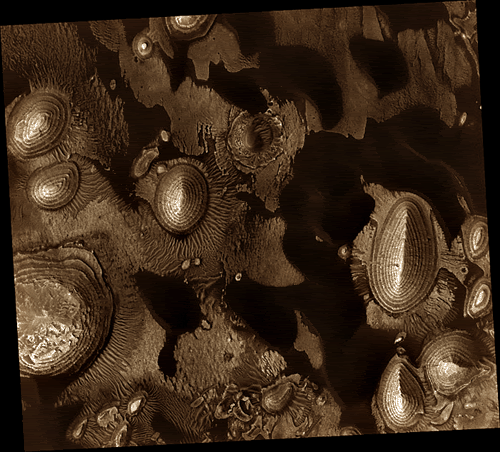It looks like you're using an Ad Blocker.
Please white-list or disable AboveTopSecret.com in your ad-blocking tool.
Thank you.
Some features of ATS will be disabled while you continue to use an ad-blocker.
share:
This color thing is a red-herring. NASA always labels its photo's as to whether they are true color or not.
I shoot photo's in a Raw format which means I have to correct the color of the photo's I take here on earth just like they do the photo's from Mars.
Since I have an ambient light sensor sitting on my desk from Datacolor, I'm fairly sure they included a similar device on the Rovers. With that information and the RGB Channels they could get really close to what you would see on Mars. With all that iron oxide in the dust, the amount of dust in the air and the time of day could dramatically alter the colors at different times of day; just like sunrise and sunset on earth. The overhead sky may well appear blueish at high noon but very red earlier and later in the day depending on the angle of the sun.
For me to get accurate colors here on Earth I have to constantly calibrate my monitor, scanners and printers with color profiles created with special sensors. With point and shoot digitals you are just getting approximations based the the histogram. Thats why you have different choices of setting for daylight, cloudy and so forth on most digital cameras. To get the real colors you have to use a target to get the white level before you shoot and make sure your color profiles are right for your printer. Even then it is just a good approximation.
I shoot photo's in a Raw format which means I have to correct the color of the photo's I take here on earth just like they do the photo's from Mars.
Since I have an ambient light sensor sitting on my desk from Datacolor, I'm fairly sure they included a similar device on the Rovers. With that information and the RGB Channels they could get really close to what you would see on Mars. With all that iron oxide in the dust, the amount of dust in the air and the time of day could dramatically alter the colors at different times of day; just like sunrise and sunset on earth. The overhead sky may well appear blueish at high noon but very red earlier and later in the day depending on the angle of the sun.
For me to get accurate colors here on Earth I have to constantly calibrate my monitor, scanners and printers with color profiles created with special sensors. With point and shoot digitals you are just getting approximations based the the histogram. Thats why you have different choices of setting for daylight, cloudy and so forth on most digital cameras. To get the real colors you have to use a target to get the white level before you shoot and make sure your color profiles are right for your printer. Even then it is just a good approximation.
life is on mars
they are aliens but look just like us
there is a 600 million population on mars
most of them live underground
they are aliens but look just like us
there is a 600 million population on mars
most of them live underground
reply to post by lilmikey
And you know this how? This sounds like something John Lear used to say...I'm not aware of any evidence he ever provided to back up this claim.
And you know this how? This sounds like something John Lear used to say...I'm not aware of any evidence he ever provided to back up this claim.
Originally posted by antar
Why do they never seem to go out near the mountains in the distance? With any possible runoff would that be the ideal place to look for evidence?
Well, that's the million dollar question! There are hundreds of areas that need more attention for answers that we've been looking for. But alas! The excuse always is that there is no scientific reason to do so as there are areas better suited for analysis. So they go land their rovers in the most innocuous places like those small rocky outcrops and mini craters in the hope of finding ahhh...water and life!! And come back empty handed - naturally!!
Probably there's something more than meets the eye here?
reply to post by mikesingh
No, I thought the reason they didn't go for the mountains in the distance is that they don't think the rover can handle the terrain.
No, I thought the reason they didn't go for the mountains in the distance is that they don't think the rover can handle the terrain.
Great job as always! Amazing research. Looking forward for more from you.
we need to form a mikesingh watch group, seriously for his safety
seriously
spreading truth like peanut butter
[edit on 5-4-2008 by OSSkyWatcher]
seriously
spreading truth like peanut butter
[edit on 5-4-2008 by OSSkyWatcher]
reply to post by OSSkyWatcher
No, I think the government wants Mike alive for disinfo's sake (I don't know if he's deliberately spreading it, just that it's being spread). Have you seen his Nibiru thread?
No, I think the government wants Mike alive for disinfo's sake (I don't know if he's deliberately spreading it, just that it's being spread). Have you seen his Nibiru thread?
My hope would be that there isn't life on mars. That way there's no ethical dilemma when we get around to terraforming it a couple hundred years.
reply to post by OSSkyWatcher
Flesh out that reply a bit more, please.
[edit on 6-4-2008 by whitecastle]
Flesh out that reply a bit more, please.
[edit on 6-4-2008 by whitecastle]
There is also more recent data that point to water actually still occasionally flowing on mars briefly. I read about this in an article within
astronomy magazine a few months ago, but this is the skinny:
Images courtesy NASA.gov ...
And then this..
And this new crater filled with seemingly newly laid sediment..
You can read the details here:
www.nasa.gov...
But pretty much all the scientists are pretty amazed at what we are witnessing.
-ChriS
Images courtesy NASA.gov ...
And then this..
And this new crater filled with seemingly newly laid sediment..
You can read the details here:
www.nasa.gov...
But pretty much all the scientists are pretty amazed at what we are witnessing.
"These observations give the strongest evidence to date that water still flows occasionally on the surface of Mars," said Michael Meyer, lead scientist for NASA's Mars Exploration Program, Washington.
-ChriS
Originally posted by Blaine91555
This color thing is a red-herring. NASA always labels its photo's as to whether they are true color or not.
I shoot photo's in a Raw format which means I have to correct the color of the photo's I take here on earth just like they do the photo's from Mars.
Since I have an ambient light sensor sitting on my desk from Datacolor, I'm fairly sure they included a similar device on the Rovers. With that information and the RGB Channels they could get really close to what you would see on Mars. With all that iron oxide in the dust, the amount of dust in the air and the time of day could dramatically alter the colors at different times of day; just like sunrise and sunset on earth. The overhead sky may well appear blueish at high noon but very red earlier and later in the day depending on the angle of the sun.
For me to get accurate colors here on Earth I have to constantly calibrate my monitor, scanners and printers with color profiles created with special sensors. With point and shoot digitals you are just getting approximations based the the histogram. Thats why you have different choices of setting for daylight, cloudy and so forth on most digital cameras. To get the real colors you have to use a target to get the white level before you shoot and make sure your color profiles are right for your printer. Even then it is just a good approximation.
When the first picture of mars was taken and reconstructed back on earth, everyone thought mars had a blue sky. The filtering errors between the data being gathered, and the data being reconstructed caused many to think that mars had a blue sky at first (like earth). They later learned that wasn't the case at all (supposedly).
www.msss.com...
mars.spherix.com...
stason.org...
From Stason.org...
One thing scientists learned was that Mars' sky was pinkish in color, not dark blue as they originally thought (the sky is pink due to sunlight reflecting off the reddish dust particles in the thin atmosphere).
From Spherix.com abstract paper by Ron L. Levin and Gilbert V. Levin, paper entitled "Solving the color calibration problem of Martian lander images"...
The first color image (12A006/001) of the surface of Mars was taken July 21, 1976, at the Viking 1 site, one day after the landing. Immediately displayed on color monitors at JPL, as seen in Figure 1a, the landscape awed observers with its resemblance to that of Arizona. Typical desert colorations of soil and rock, ranging from umber sand to yellowish-brown and olivine-colored rocks stood out clearly under a blue sky. Two hours later, however, the official image was changed to the monotone of orange-red (NASA P-17164), Figure 1b, that, with few exceptions, has prevailed in NASA-published images of Mars ever since, as presented by Mutch et al.[1]. However, a spectral analysis of color images of the Viking 1 site reported[2] a broader palate. The paper made the first, and perhaps only, reported use of JPL’s Image Processing Laboratory to analyze digitally the red, green and blue color channels of the images taken by the Viking 1 lander camera. In addition to studying the color images, their RGB components were transformed into saturation, hue and intensity components to enhance subtle deviations. When these components were equally amplified to produce an equal average sensitivity over the spectral bandpass, the resulting “radiometric” (closest possible approach in appearance to a human observer) images very closely resembled the first color image (12A006/001). Among the range of colors, the paper reported that some of the rocks exhibited greenish patterns that apparently changed between images taken 301 sols apart. Radiometric images of lichen-bearing terrestrial rocks taken and processed through the same system as were the Viking images showed a close resemblance of the lichen colonies to the greenish patches on the Mars rocks. Inclusion in the analysis of three near-IR channels available on the Martian images enhanced the greenness of the patches that were, to the sensitivity of the method, virtually indistinguishable from the lichen colonies on the terrestrial rocks.
Some believe that the first mars image to be sent back to earth was the accurate color of mars, not the reddish hues which we are all so accustomed to being shown. Nasa hasn't exactly been honest about UFO's in orbit even though many of the UFO events have occured on live TV broadcasts, and nasa astronauts have actually called objects in orbit UFO's before on TV. How can we honestly say they are being completely honest about this? Food for thought.
-ChriS
[edit on 6-4-2008 by BlasteR]
Originally posted by SonicInfinity
But in every other place where we have found water, we have found life. This could be an exception, but the odds point to there being life.
We have found water on a lot of worlds so far, but no life yet
reply to post by epictitus
Indeed, if there is current life there, then Mars is for the Martians, and we should never go back. But, I have reservations on the Viking data. As any scientist will tell you, any data is inconclusive unless verified by a mountain of evidence. It is not there yet, but that mountain is getting taller.
Indeed, if there is current life there, then Mars is for the Martians, and we should never go back. But, I have reservations on the Viking data. As any scientist will tell you, any data is inconclusive unless verified by a mountain of evidence. It is not there yet, but that mountain is getting taller.
reply to post by zorgon
Ah, but we've just begun looking! I'm quite optimistic there is life in this solar system beyond our world!
Ah, but we've just begun looking! I'm quite optimistic there is life in this solar system beyond our world!
nvm, it will just stray off topic
this is a great thread though, and maybe it's just me but kind of refreshing? you can show this thread to people in your family and you'll certainly give them a few things to think about
this is a great thread though, and maybe it's just me but kind of refreshing? you can show this thread to people in your family and you'll certainly give them a few things to think about
Originally posted by whitecastle
reply to post by zorgon
Ah, but we've just begun looking! I'm quite optimistic there is life in this solar system beyond our world!
I agree and the simple ability for life to adapt gives an even higher probability that we are not alone. We have discovered organisms in all of the most inhospitable conditions on earth. Although we know earth has also had life evolving for millions of years, whose to say that life isn't everywhere? If life really began by a comet or asteroid containing single celled organisms (life basically began as blue/green algae and other simple, single celled-organisms), then wherever that asteroid or comet came from must also have life. The chain goes on and on and on.
The drake equation alone proves that life is pretty much everywhere, even if it isn't so abundant as we had hoped.
-ChriS
[edit on 6-4-2008 by BlasteR]
Originally posted by whitecastle
No, I thought the reason they didn't go for the mountains in the distance is that they don't think the rover can handle the terrain.
OK, so instead of landing the rovers in the middle of a small rocky desert, why didn't they think of one of these places shown below where there could be a possibility of finding water and what that 'golf ball' structure is all about?
Source: Malin Space Science Systems
MOC2-1591
Location near: 8.8°N, 1.2°W

MOC Image m1501228b
Image J. Danger
Courtesy: Dangerzone Productions
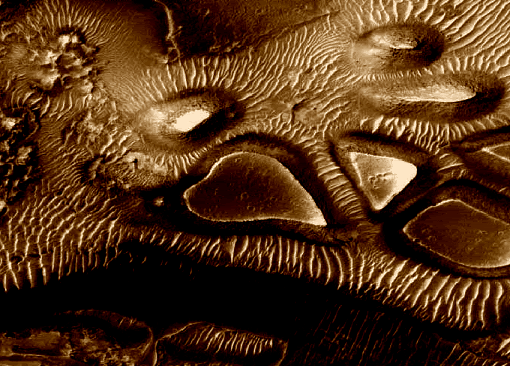
Source: NASA/JPL/MSSS
East Candor Chasma
MOC E04-01514
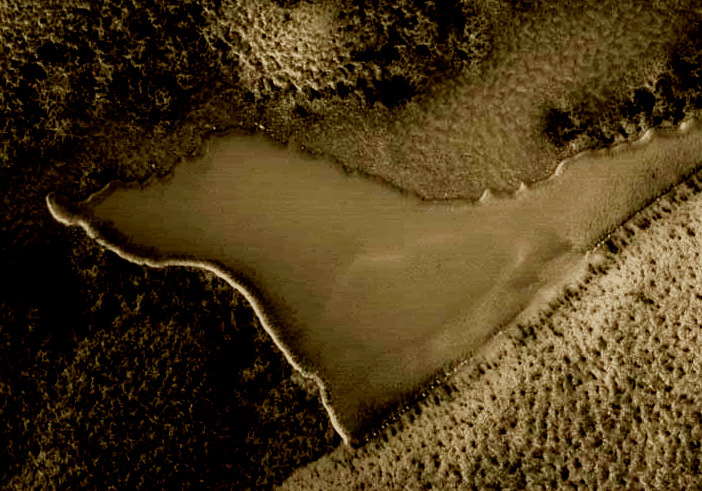
Source: NASA_JPL_MSSS
MGS MOC M09-01354
Loc: Midway of South Polar Cap
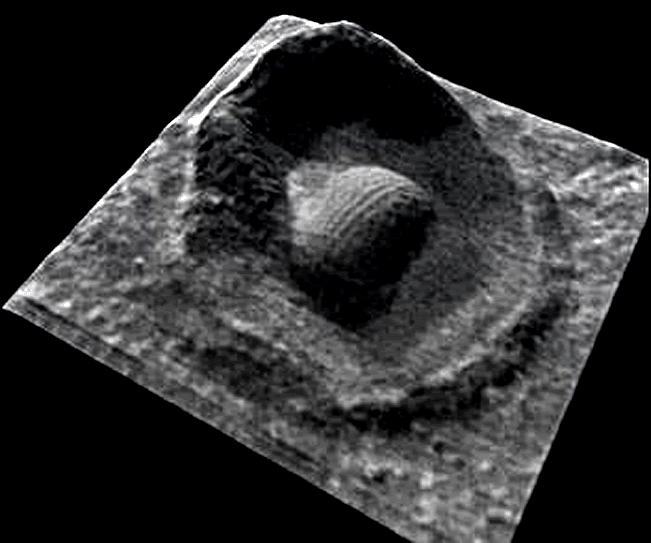
Courtesy: Paranormal.about.com
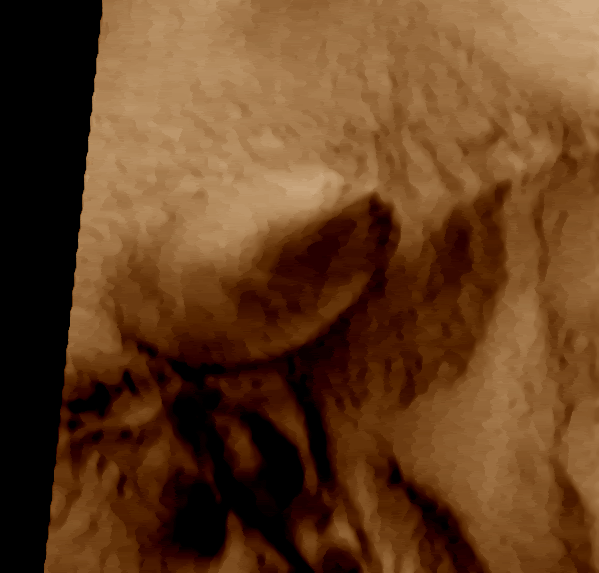
MOC narrow-angle image AB1-08505
Well, of course these have zilch value where NASA is concerned. Better to land near a dull and drab rocky desert and avoid the controversies, what?
Cheers!
new topics
-
Biden Nationalizes Another 50,000+ Student Loans as He Heads for the Exit
US Political Madness: 7 minutes ago -
An Interesting Conversation with ChatGPT
Science & Technology: 9 hours ago
top topics
-
An Interesting Conversation with ChatGPT
Science & Technology: 9 hours ago, 7 flags -
Biden Nationalizes Another 50,000+ Student Loans as He Heads for the Exit
US Political Madness: 7 minutes ago, 1 flags
active topics
-
Salvatore Pais confirms science in MH370 videos are real during live stream
General Conspiracies • 242 • : Freeborn -
Biden Nationalizes Another 50,000+ Student Loans as He Heads for the Exit
US Political Madness • 0 • : xuenchen -
US Federal Funding set to Expire December 20th. Massive CR on the way.
Mainstream News • 34 • : RickinVa -
An Interesting Conversation with ChatGPT
Science & Technology • 17 • : Athetos -
The Truth Behind the Manchester Airport "Police Assault" Video
Social Issues and Civil Unrest • 48 • : SprocketUK -
Drone Shooting Arrest - Walmart Involved
Mainstream News • 33 • : RustEShackelFord -
World's Best Christmas Lights!
General Chit Chat • 15 • : TheInvisibleRedneck -
Covid....... Again.
Diseases and Pandemics • 32 • : DoubleDNH -
Squirrels becoming predators
Fragile Earth • 29 • : Oldcarpy2 -
Can someone 'splain me like I'm 5. Blockchain?
Science & Technology • 78 • : CriticalStinker

